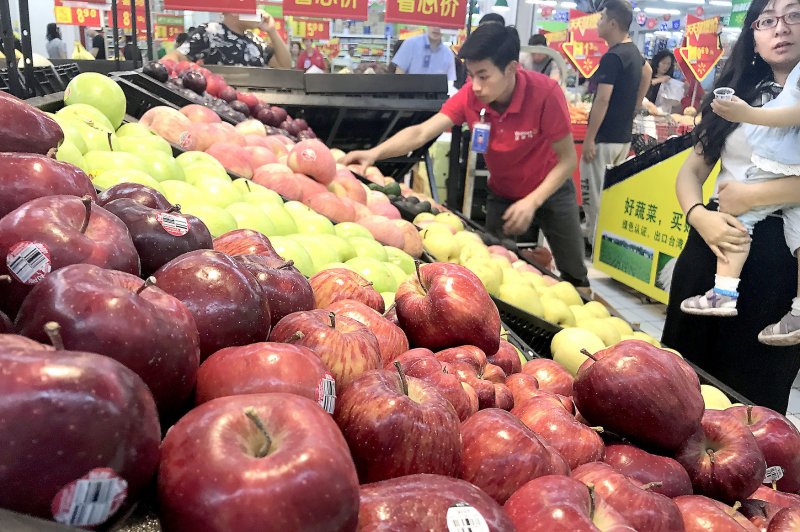June 25 (UPI) — As America’s
second-leading importer of fresh apples, India might have dealt a major
blow to that U.S. industry by imposing tariffs on the fruit, producers
fear.
“India was exploding as a market for imported apples,” said Jim Bair,
the president and CEO of the U.S. Apple Association. “Then, when the
tariffs went into effect, it fell off the cliff.”
India announced June 15 it would impose a 20 percent tariff on U.S.
apples — along with 27 other products including almonds, walnuts and
lentils.
The move came in retaliation for the Trump administration revoking
India’s preferential trade privileges. But India had been threatening to
impose the tariffs since August, when the United States began taxing
imports of steel and aluminum from that nation. India had delayed
implementing the retaliatory tariffs several times as negotiations
continued.
RELATED U.S. trade chief talks Mexico trade, China tariffs in Senate hearing
The tariff mainly impacts growers in Washington state, which produces
the vast majority of America’s apples. Around a quarter of U.S. apples
are exported each year — and 95 percent of those are grown in
Washington.
“So, any trade disruptions really target the Washington apple
industry,” said Toni Lynn Adams, a spokeswoman for the Washington Apple
Commission, which promotes and markets the state’s apples
internationally.
Mexico is the top importer for U.S. apples. Canada usually claims the
second spot, but last year India surpassed Canada for the first time,
importing some 320 million pounds compared to Canada’s roughly 280
million pounds.
RELATED India announces tariff hike on 28 U.S. exports
That trend ended abruptly after India announced its intention to impose the retaliatory tariff, Adams said.
“When they made that announcement, there was a rush to get fruit into
the market before the cost went up,” Adams said. “So, all that fruit
flooded the market, and it really disrupted the market.”
After that, India’s imports dropped substantially, and did not
recover. So far this year, India has imported 60 percent fewer American
apples, Adams said.
RELATED U.S., Mexico reach agreement to avoid tariffs, stem migration
If the trend continues, apple prices will fall.
“Lost sales always result in lost revenue,” the apple association’s
Bair said. “And it looks like we have a huge crop coming on this year.
We’re going to need to find places to sell it. People are getting very
anxious to get these trade disputes settled.”
The conflict with India is not the only trade dispute impacting the
apple industry. Last spring, America’s top apple importer — Mexico —
placed a 20 percent tariff on U.S. apples in retaliation for the steel
and aluminum tariffs imposed by the United States.
While they were in place, exports to Mexico fell more than 20
percent, according to the Washington Apple Commission. But Mexico lifted
the tariffs in May, after the U.S. agreed to remove its steel and
aluminum duties, delighting the apple industry.
That excitement was short-lived, though, as growers now fear what
could happen if Congress does not approve the new USMCA trade deal,
which the Trump administration negotiated to replace NAFTA.
“We’re really hopeful that it gets passed so we can have some stability with our top export markets,” Adams said.
The trade dispute with China also is having an impact, Adams added.
That nation is America’s sixth-leading apple importer, often choosing
higher quality — thus higher priced — apples. However, China placed a
25 percent tariff on the U.S. fruit last spring, in retaliation for
similar tariffs levied by the Trump administration and that slowed
trade.
Apple growers are feeling the pressure, Adams said. Total apple
exports — to all countries — have fallen more than 30 percent this
year, she said. Industry experts expect that number to rise if the trade
disputes continue after fall harvest, when American apples flood the
market.
“This is an overwhelming issue,” she said. “We’re getting hit on three major markets. One market is something to overcome. But three is a major obstacle.”
READ FULL STORY: UPI





